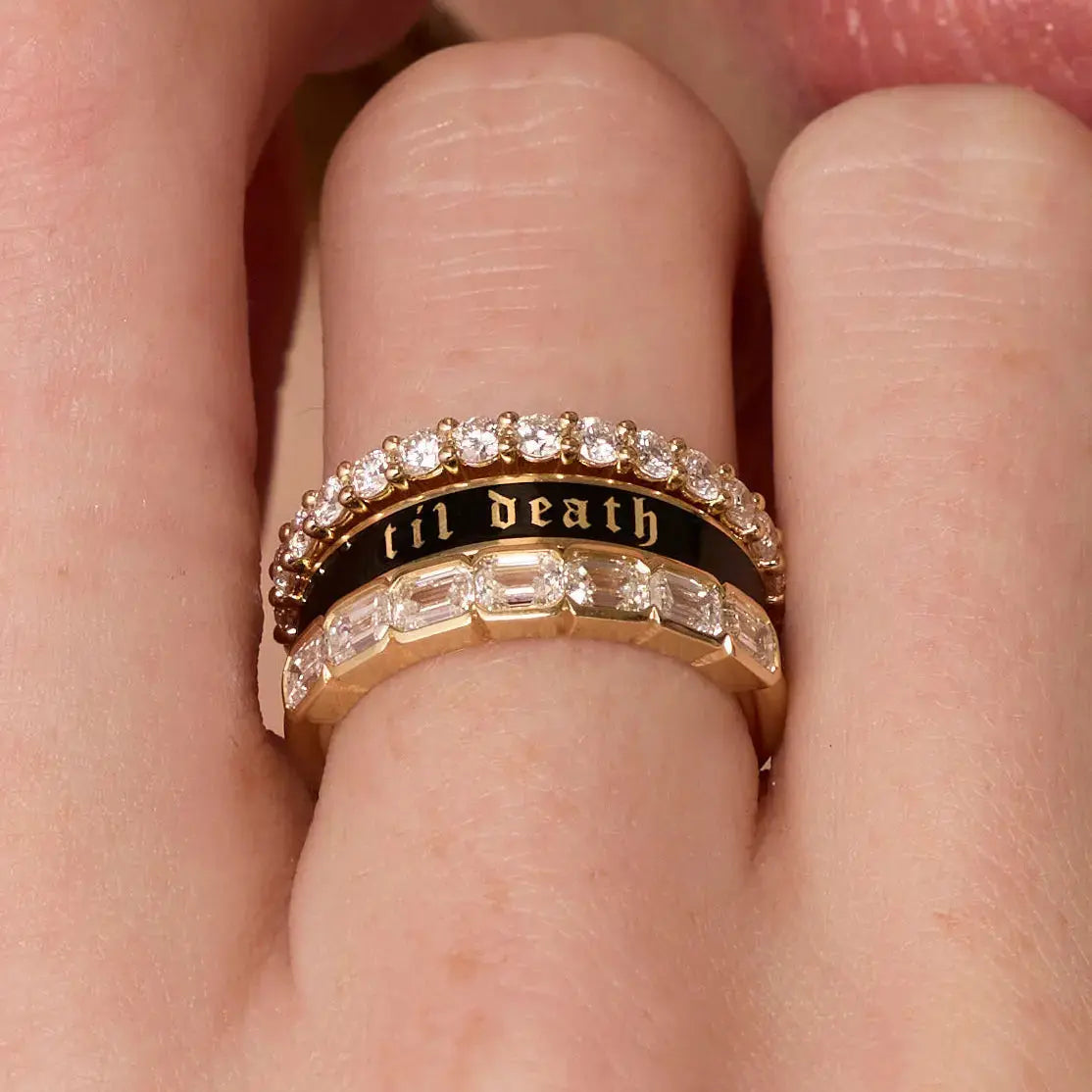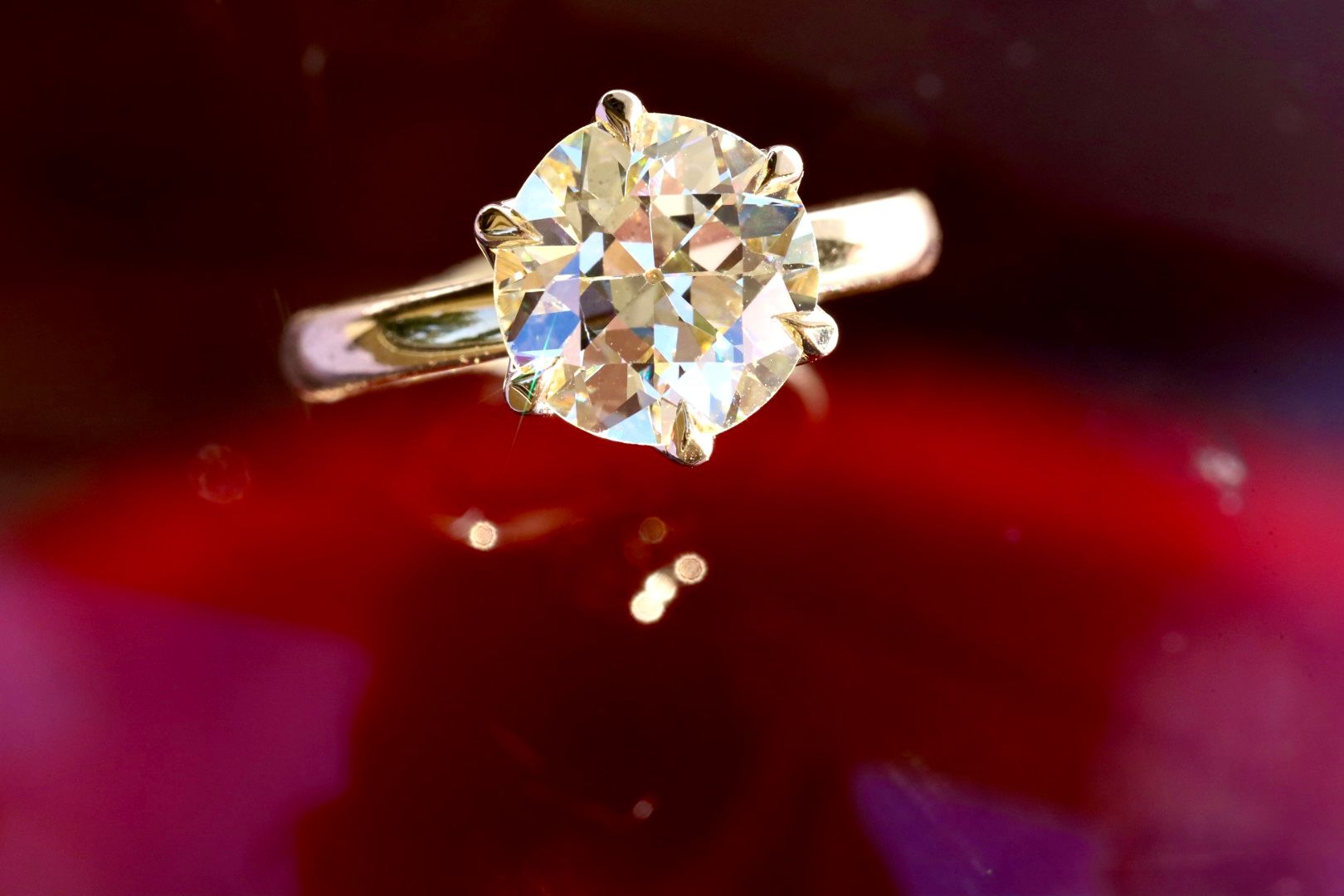A Guide to Old European Cut Diamonds
Have you ever gazed into the face of a diamond and not been able to look away? This is what we catch ourselves doing every time we encounter an old European cut at Marrow. In the spirit of sharing our obsession, we’re talking about what exactly old European cuts are and why you should check them out if you’re on the hunt for an engagement ring!
If you are intrigued by this timeless style of diamond, then keep reading…
What Is an Old European Cut?
Old European-cut diamonds contain 58 facets and were cut individually by hand (with the majority cut between 1890-1930s). Because the main source of light during this time was candlelight, these diamonds were cut to maximize their sparkle for this type of lighting (dreamy, we know). This cutting style was developed in Europe and makes every diamond unique… meaning no two stones will ever be the same.
Compared to modern cut diamonds, old Euros have a higher crown, smaller table, and open culet (that small circle seen in the center).
Characteristics of an old European Cut Diamond:
There are a variety of features that differentiate the old European cut diamond from other traditional cuts.
- Shape: The stones are outlined to be round when you view them from the top.
- Facet: There are 58 facets around the diamond, similar to the number of cuts in a round contemporary stone.
- Culet: The old European cut diamond has an open culet, which means that the bottom ends in a flat facet instead of a sharp, knifelike point.
- Cutting: The old European cut diamond is often cut by hand, giving it a high value for those in favor of the intimate and antique.
- Symmetry: Since there isn’t a technology to cut these diamonds, the old European cut stones are often asymmetrical. Their facets might be irregular and do not align properly with each other, which is why they are pointed outward. However, it’s the asymmetrical characteristics that give it a unique personality and ensure that there’s no other diamond out there like yours.
What’s the difference between and old European and old mine cut diamond?Another Marrow favorite, old mine cut diamonds are older than old Europeans (think more than 200 years before the old European cut was born). Dating back to the 1700s and popular during the Georgian and Victorian eras, this diamond cut also has 58 facets. But, unlike an old European, old mine diamonds have a square girdle which is different from the round structure of the old European cut. The old European cut has more brilliance and innovation than the old mine cuts. However, here at Marrow, we love working with these old stones equally!
Why Choose an old European Cut?
The old European cut is a timeless classic - it’s become one of the most sought after diamonds, especially since there aren’t very many of them (compared to modern round brilliants, which are readily available). The mines in Africa that provide high quality colorless diamonds of today were not around in the days of Old European cut diamonds. These diamonds were mostly mined in Brazil and India, and typically have a warmer hue to them. However, many appear to be whiter than they are because the cut was meant to enhance the color of the stone. Since they are handcrafted and each of these stones has their own personality, old Euros are the perfect choice for anyone who wants to stand out from the crowd.
Shop Old European Engagement Rings.
The Pros & Cons of old European Cut Diamonds
PROS OF OLD EURO CUTS:
- Antique and recycled, thus environmentally friendly
- Unique because it was cut by hand
- Draws you in with broad facets
- Better price per carat
- They grow more and more rare as the years pass!
CONS OF OLD EURO CUTS:
- Often a lower color; many of the whiter antique diamonds were recut into modern round brilliants in order to garner a higher price.
- Often the cut/symmetry is graded as “fair” or “poor” when they are graded against the Round Brilliant standards, although many in the industry argue that it’s unfair to grade a 70-100 year old diamond against the standards of today.
People often ask, "Should I buy an old European cut diamond or stick to the modern round brilliance?" It all depends on what you are looking for. If you want a timeless classic that has its own personality and flair, then definitely go with the old European cut. However, if you want perfection and precision, then the modern round cut may be best for you.
Whether you’re looking for a truly unique diamond for your engagement ring, or want to go the modern route… Old European cuts are definitely worth checking out! We don’t play favorites...but they just might be.


![Til Death Black Enamel Band - 4mm [yellow gold front]](http://www.marrowfine.com/cdn/shop/files/Tildeathblackenamel_YellowGold.jpg?crop=center&height=1500&v=1760536289&width=1500)

![The Harley Ring [Yellow Gold]](http://www.marrowfine.com/cdn/shop/files/The_Harley_Ring_YG.jpg?crop=center&height=1500&v=1751935264&width=1500)
![The Harley Ring and Custom Enamel Band in Luxardo [on hand]](http://www.marrowfine.com/cdn/shop/files/WDHarley_CustomEnamelBand.jpg?crop=center&height=2462&v=1753724376&width=2462)

![Til Death Black Enamel Band - 6mm [Yellow Gold]](http://www.marrowfine.com/cdn/shop/files/TilDeathBlackEnamel6mm.jpg?crop=center&height=240&v=1760536277&width=240)
![Something Blue Enamel Band [Yellow Gold]](http://www.marrowfine.com/cdn/shop/files/SomethingBlueEnamelBand.png?crop=center&height=240&v=1751935122&width=240)
![Everyday Dome Ring [Yellow Gold]](http://www.marrowfine.com/cdn/shop/files/Everyday_Dome_Ring_YG.jpg?crop=center&height=240&v=1751935188&width=240)
